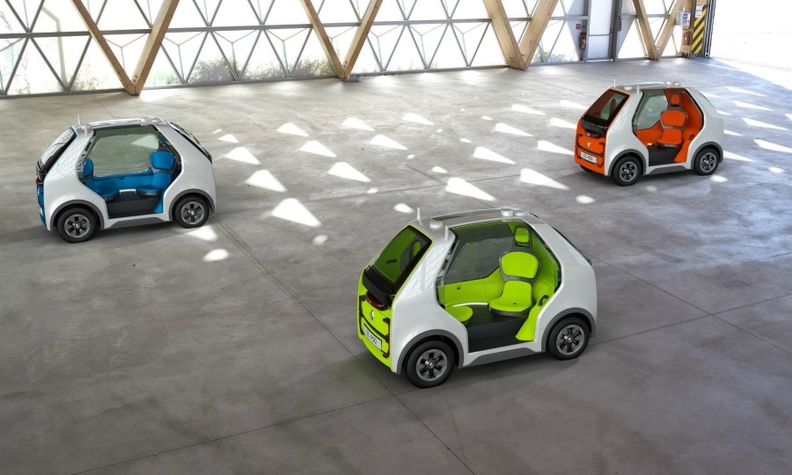Via: Automotive News
Renault has introduced the EZ-Pod, the latest in its series of “EZ” electric concepts. The two-seat autonomous vehicle is designed to carry people and goods over short distances.
The EZ-Pod’s small footprint — a total of three-square meters — allows it to navigate narrow streets and keep a low profile in urban spaces, Frederic Auzas, robovehicle program manager at Renault, said at the VivaTech exposition in Paris, where the vehicle was unveiled this week.
The EZ-Pod is the latest concept to be unveiled by Renault over the past year, that include the EZ-Flex, a small van; the EZ-Ultimo, a vision of future premium mobility; the EZ-Pro, a larger delivery vehicle with a fleet of autonomous pods; and the EZ-Go, an autonomous robotaxi designed for fleet use.
The EZ-Pod is a functional test vehicle, Auzas said, and is based on the Renault Twizy, an electric two-seat runabout that the European Union classifies as a “quadricycle.” It is designed to operate at low speeds — Renault calls it a “limited speed micro-mobility solution” — and needs relatively few sensors, keeping costs down, he said. The seats are from the Twizy, and the interior is designed to be easy to clean and durable.
Auzas described the EZ-Pod, which was designed from the start as an autonomous vehicle, as a “work in progress,” with uses and configurations evolving according to users’ needs. Among the potential “first mile” and “last mile” uses are dropping off children at school or local transport for elderly shoppers.
Renault also announced several partnerships and test programs at VivaTech. The automaker will be testing the EZ-Flex van with the French postal service, with the goal of gathering data that will help Renault design better urban delivery vehicles.
The automaker is also starting a trial on-demand robotaxi service using modified Renault Zoe electric cars at the new Paris-Saclay Autonomous Lab Project. The lab is a consortium of Renault, the transportation agency Transdev, the University of Paris-Saclay, and other partners.
